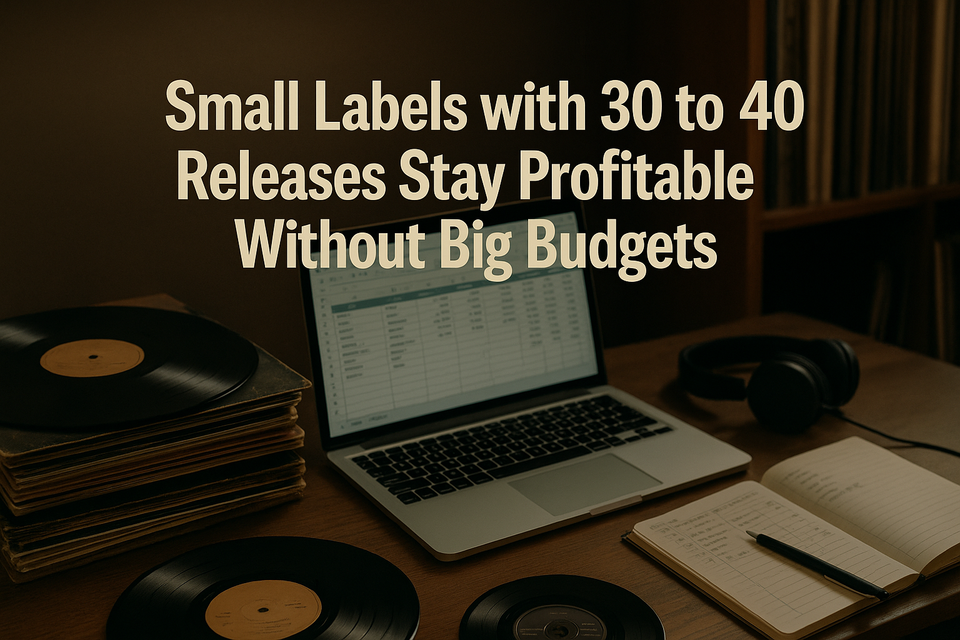How Small Labels with 30 to 40 Releases Stay Profitable Without Big Budgets

Independent labels that release a handful of tracks each year face one type of challenge. Labels with thirty to forty releases face another. At this scale you are running a system, not an experiment. Profitability depends less on a single hit and more on the ability to coordinate dozens of releases, multiple artists and a steady stream of administration. The encouraging part: a major-label budget is not necessary. What you need is a clear structure, consistent discipline and transparency about where your money goes.
For labels working at this volume, planning ahead is non-negotiable. A release calendar is the backbone of the business. Scheduling six to twelve months in advance protects pitch windows, keeps distribution on track and prevents last-minute chaos. Treating the schedule like an editorial plan creates predictability for the label and for every artist on the roster.
Budget control becomes the second pillar. With many releases you cannot treat each project equally. Some tracks deserve a full campaign with advertising, PR and influencer support, others will perform on organic reach and long-tail streaming. The skill is to decide early where to invest. Smart labels allocate marketing spend where a realistic return exists and communicate openly with artists about those choices.
Automation and digital tools form the third pillar. At this scale, manual spreadsheets and endless email threads quickly collapse. Distribution platforms handle the basics, but true efficiency comes from automating royalty splits, using shared dashboards for artist updates and scheduling content well in advance. A label releasing forty tracks a year without automation will always be at a disadvantage because every hour spent on repetitive administration is an hour lost on strategy.
Artist relationships remain the fourth pillar. With many acts on the roster, personal attention has to be structured. What you can promise is clarity: timely royalty reports, honest feedback and realistic targets. In the revenue range of one to three thousand euros per month, credibility is more powerful than overpromising. Artists stay when they feel they are part of a professional system, not a chaotic hobby project.
Profitability ultimately comes from knowing your numbers. If your break-even sits at 250,000 streams per track you need to calculate how many releases reach that threshold and what that means for annual revenue. Labels that endure treat numbers as strategy, not as an afterthought. It is not about chasing one hit but about managing a catalogue where successes cover the average and the system stays profitable as a whole.
Conclusion: A label with thirty to forty releases a year functions more like a small publisher than a hobby project. Profitability at this level comes from a disciplined release plan, prioritised budgets, automation and transparent artist management. You do not need big budgets to achieve this, but you do need a system.
FAQ
How can a label handle 30 to 40 releases without chaos?
Plan at least six months ahead and lock the release calendar. Treat it as a fixed schedule, not a suggestion.
Should every release receive the same marketing budget?
No. Prioritise based on realistic return. Some tracks are for brand building, others are for income. Communicate this openly with artists.
What tools help labels scale?
Automated royalty reporting, content scheduling platforms and shared dashboards for artist communication become essential once you pass twenty releases per year.
